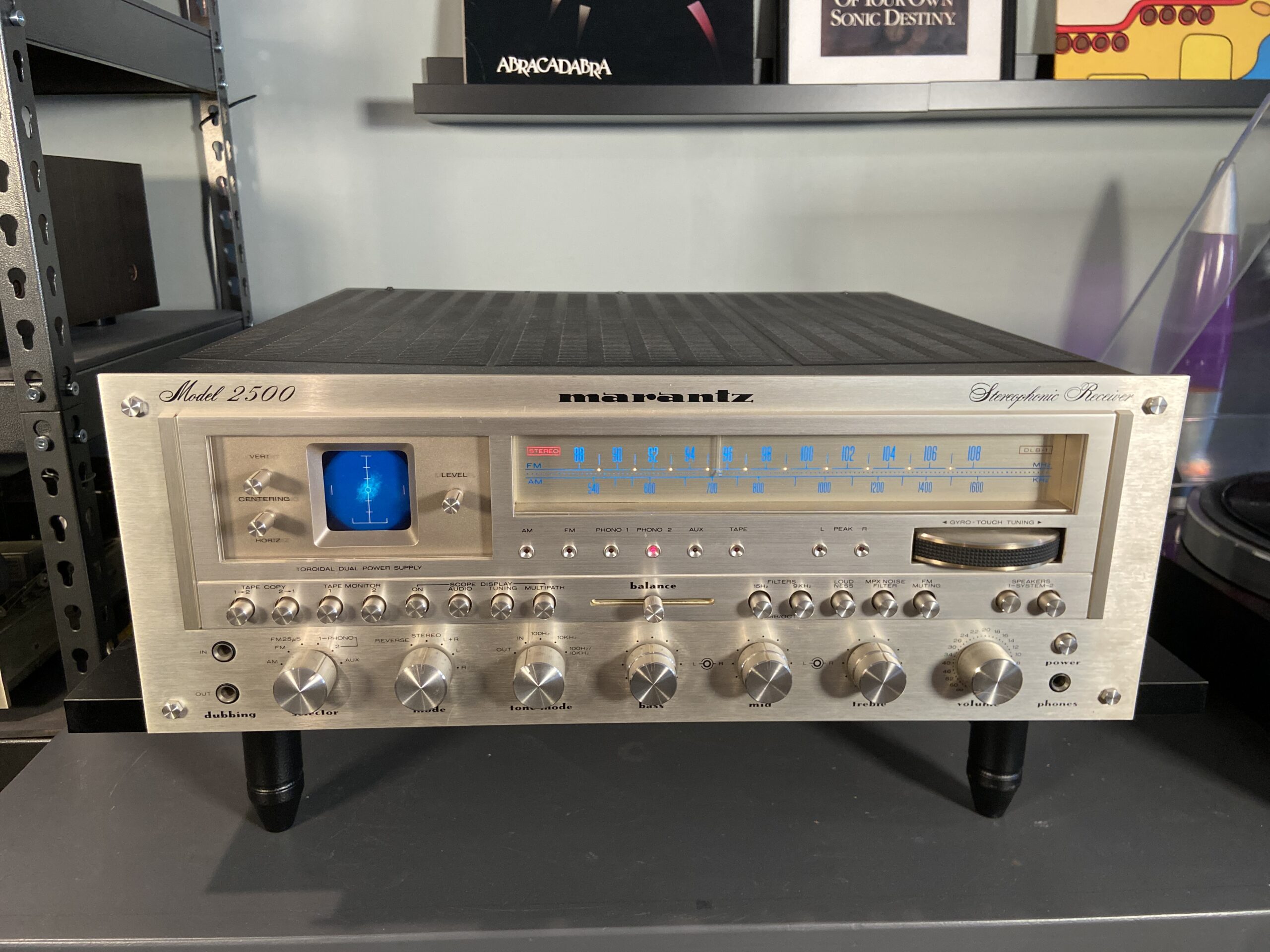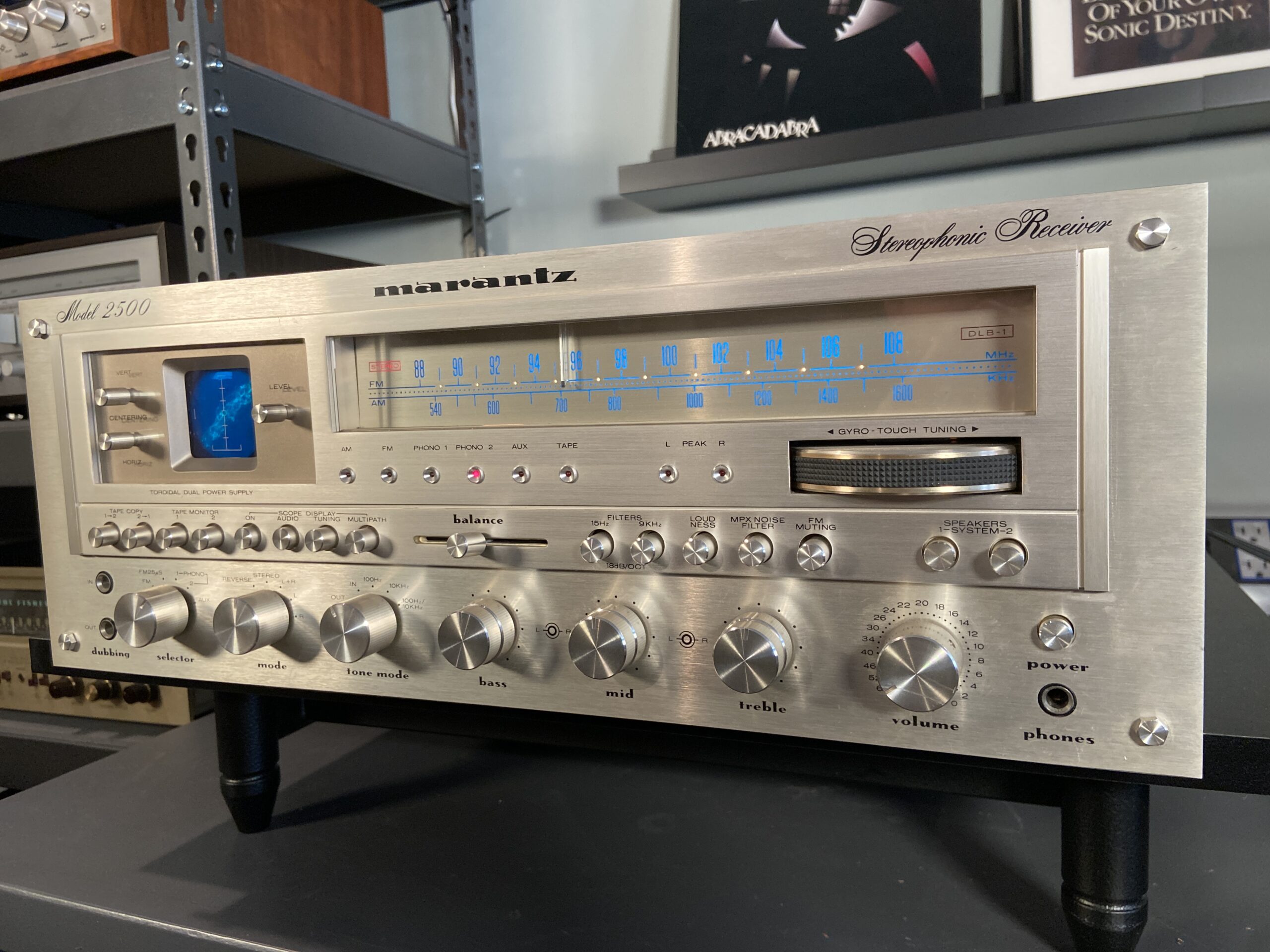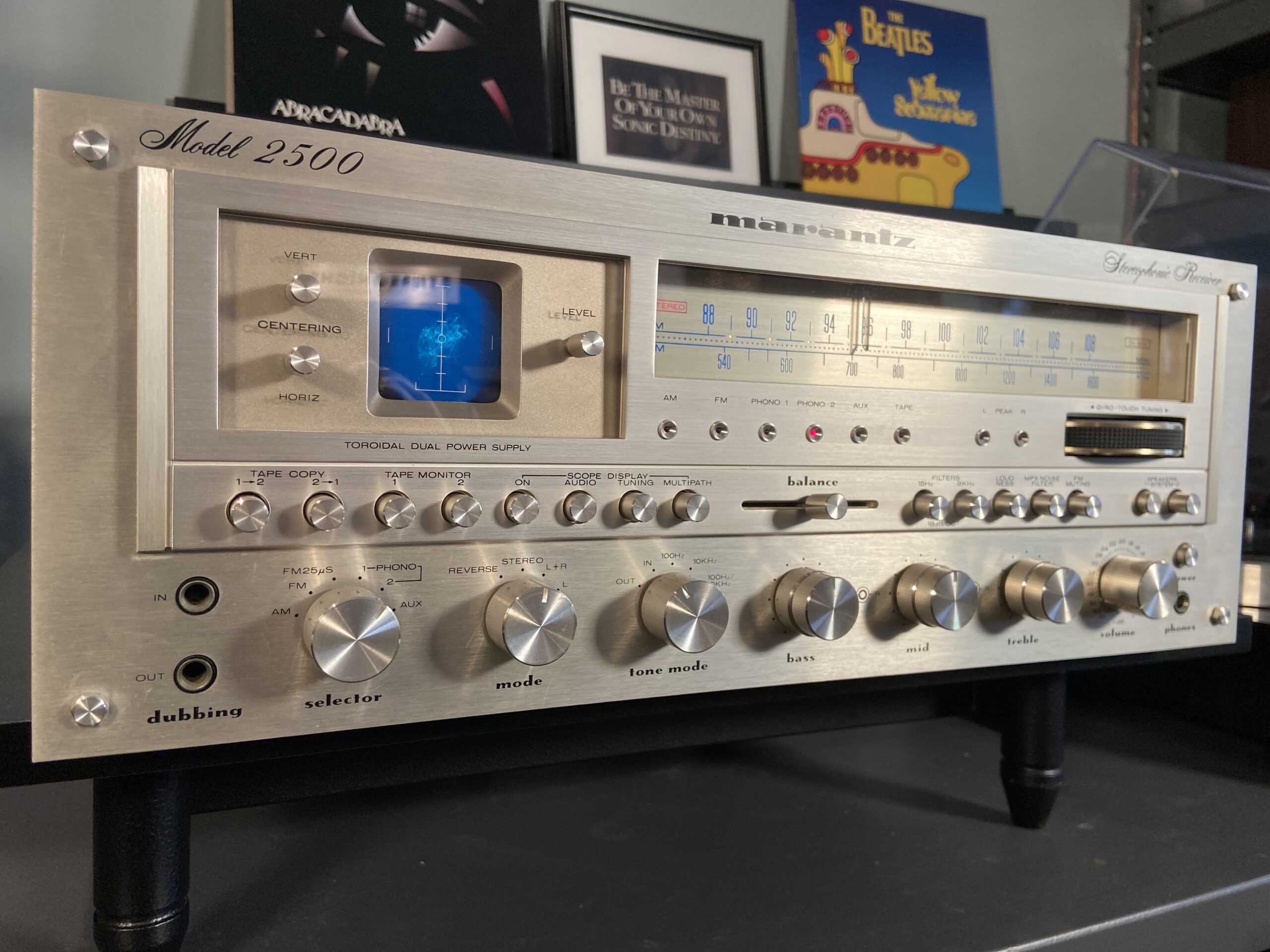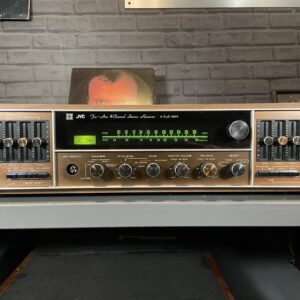Description
Stepping back to the late 1970s, the “Receiver Wars” saw audio manufacturers push the limits of power and presence, and the Marantz 2500, launched in 1977, arguably reigned supreme. This wasn’t just another receiver; it was a testament to Marantz’s engineering prowess, boasting an astounding 250 watts per channel into 8 ohms with minimal distortion. This immense power provided incredible dynamic headroom, effortlessly driving demanding loudspeakers, while a thermostatically controlled cooling fan managed the substantial heat, a feature typically found only in professional amplifiers.
Beyond its formidable power, the Marantz 2500 truly stood out with its signature features and robust design. Its iconic 3-inch oscilloscope tube offered a captivating visual representation of audio signals and FM tuning, setting it apart visually. Complementing this, a superb FM/AM tuner and the silky-smooth “Gyro-Touch” tuning wheel ensured excellent radio performance. Built like a tank with a thick brushed aluminum faceplate, the 2500 weighed nearly 60 pounds, signifying its premium construction. Sonically, it delivered the characteristic warm, powerful, and musical Marantz sound, making it a highly sought-after piece of hi-fi royalty and a lasting symbol of that golden era in audio.
This unit has had the Filter Caps replaced using the Pro Audio PCB board MZ-Cap-1. It was tuned up and all controls/switches cleaned.




